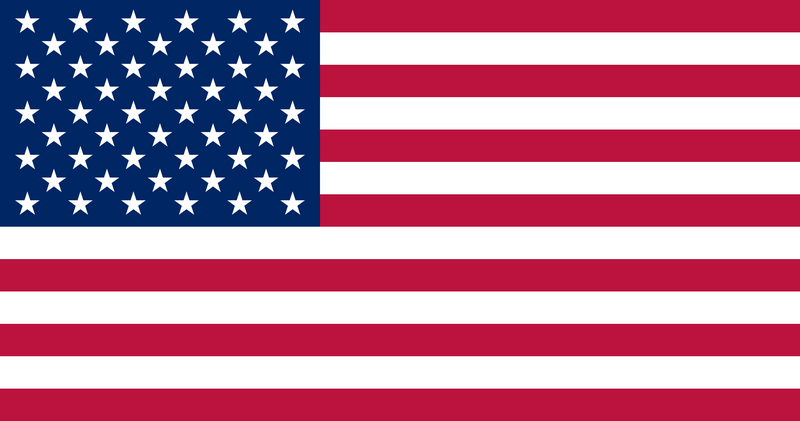Tiny Fragments That Make A Big Impact
Have you heard the news about microplastics? They are in the air we breathe, the water we drink, the food we consume, and even in the human bloodstream.
But what are microplastics? Where did they come from, and how can we limit the amount of microplastics that we interact with on a daily basis? Read on to discover the origin and definition of these tiny particles and the reasons why they have caused such a big uproar.

What Are Microplastics?
According to the Environmental Science and Technology journal, the definition of “microplastic” is any piece of plastic that is ”of all dimensions 100 nm ≤ x ≤ 5 mm”. This means that some pieces of microplastic are detectable by the naked eye. Though microplastics were first identified in the 1970s as small plastic fragments floating in the ocean, the term wasn’t coined until 2004 as part of a paper describing the accumulation of those particles.
“Plastic” is a word that covers a wide range of material, but all plastic contains polymers (substances that have large molecules/macromolecules in repeating patterns) as its main component. This means that microplastics could be composed of polycarbonate, polyethylene, polypropylene, or any other type of plastic.
Microplastics and nanoplastics
You’ll notice that in the definition above, there is a lower limit to the size of a piece of microplastic. Anything underneath that would be defined as “nanoplastic” (there is technically slight overlap, since nanoplastics can be as large as 1 μm). You may find yourself wondering, “Why do we need two different terms?” The answer comes from the fact that as a piece of plastic becomes smaller, its chemical and biological interactions change. A 50 nm piece of plastic will have a very different effect on the environment than a 3mm piece of polypropylene.
In this article, we will focus on microplastics. The science of nanoplastics and the study of microplastics are both very new, but microplastics are slightly better researched and have moved farther forward in public discourse.
Where do microplastics come from?
There are two types of microplastics: primary and secondary. The difference between the two stems from their sources:

Primary Microplastics
Primary microplastics are essentially pieces of plastic that were small to begin with. For example, plastic fibers from textiles and clothing would be categorized as primary microplastics. Fishing nets often contain plastic components and shed primary microplastics into the ocean.
Microbeads are a form of primary microplastic that will hopefully become rarer in the environment thanks to prohibitions put on their production. For example, in 2015, Barack Obama signed the Microbead-Free Waters Act, which bans all “intentionally-added plastic microbeads” in cosmetics and similar products.
Secondary Microplastics
Secondary microplastics are created when larger pieces of plastic are broken down into smaller fragments due to factors such as ocean waves and heat. Single-use plastics such as straws, water bottles, and food containers are the biggest culprits when it comes to creating microplastics.
Are Microplastics Bad?
Because the study of microplastics is so new, there aren’t many concrete conclusions concerning the effects that microplastics have on the human body and the environment. However, the studies that have been done are painting a concerning picture. The issue lies in the fact that plastic takes too long to break down into harmless molecules - it takes hundreds of years for a piece of plastic to decompose.
How microplastics affect humans
Early studies have already suggested that ingestion of and contact with microplastics have devastating effects on our health. Frederick vom Saal from the University of Missouri explains, “In animal models and in epidemiological studies in humans, we have a correlation between plastic exposures and known health hazards.” Trends between diseases and exposure to microplastics indicate that microplastics could be making us sick. Considering how much plastic is being manufactured everyday, it’s an area of study that deserves a lot more time and attention.
How microplastics affect the environment
As Prof. Dr. Angelika Brandt of the Senckenberg Research Institute in Frankfurt explains, “Each year, an estimated 2.4 to 4 million tons of plastic enter the oceans via rivers as a result of excessive global plastic consumption and poorly organized waste disposal.” Marine life is paying the price. Microplastics have been detected in every organism in the ocean, from “plankton to whales,” because there’s no way to escape waters teeming with microplastics: The deepest parts of the ocean have now become inundated with the tiny plastic fragments, to the extent that the deep sea now serves as the ocean’s “garbage dump”.
For many animals, plastics can lead to death. Small plastic particles can block their gastrointestinal tracts and either prevent them from being able to eat, or trick them into feeling full, leading to starvation. Plastic also absorbs toxic chemicals that are then released into the bodies of wild animals that consume it. The biodiversity of the sea will be smothered if this amount of pollution continues.
When did microplastics become an issue?
One could argue that microplastics became an issue when the first piece of plastic pollution entered the ocean or was consumed by a living being. Microbeads, for example, have been around for over fifty years. However, they were only recognized as a problem in 2012. This is typical of the discussion around microplastics: Awareness around the growing problem has been slow to gain traction.
Microplastics in Water
Microplastics can be found just about anywhere, including in clothes, food, and even in the air, but they are an especially tenacious problem in water. A recent study by Dr. Sherri A. Mason revealed that 93% of water bottles contain microplastics. The study looked at 259 different water brands from all over the globe. Concerningly, some of the plastic was on the larger side of “micro” - it could be seen without a microscope or magnifying glass.
Some brands were worse than others. For example, Nestle Pure Life contained more than 100,000 fragments of microplastic per liter compared to the average of 325 pieces/liter.
What was especially telling about the study was that many of the pieces of microplastic were polypropylene, the same type of plastic used to make bottle caps. That suggests that the process of bottling the water is adding to the plastic problem.
As Mason explains, “‘Bottled water is marketed as though it’s cleaner than tap, but numerous studies show it’s definitely not cleaner.” However…
Are microplastics in tap water?
…tap water is still far from perfect. An investigation by Orb Media in 2017 concluded that approximately 83% of tap water is polluted with microplastics. The US experienced the worst pollution overall, but the study included water from over a dozen countries. Many of the fragments are primary microplastics, mainly fibers from textiles. Additionally, there are concerns that there could be many more nanoplastics that were not detected by the study.
Water Without Microplastics
Luckily, there is a solution when it comes to microplastics in drinking water - there are ways that you can be assured that you are drinking clean, microplastic-free water.
Can microplastics be filtered?
There are multiple methods for filtering microplastics from your water. For example, carbon filters trap microplastics in the pores of activated charcoal, greatly reducing the number of fragments that exit the filter.
Reverse osmosis reduces most known contaminants using pressure. The water is pushed through a semipermeable membrane, which traps any unwanted particles (including microplastics).
The best solution for clean water is a combination of multiple filtration methods. Wisewell purifies water using Full Spectrum Filtration, which involves a carbon filter, reverse osmosis, a mineral filter, and UV light. These robust methods, used together, remove microplastics from your drinking water, along with other unwanted contaminants like PFAS, chlorine, and nitrates.
If there’s any doubt that the Wisewell is successfully filtering your water, you can turn to the Wisewell App for reassurance. The app lets you know the purity of your water both before and after the filtration process. It also keeps track of water consumption, cost savings, and the environmental impact that you’ve had by avoiding water bottles.
While the news around microplastics may seem bleak, there are clear ways forward. Wisewell can help you keep plastic out of your water, your body, and your world.
—
Microplastics Discovered in the Human Blood in a New Study
https://www.smithsonianmag.com/smart-news/microplastics-detected-in-human-blood-180979826/
Microplastics
https://education.nationalgeographic.org/resource/microplastics
What are microplastics?
https://oceanservice.noaa.gov/facts/microplastics.html
Plastic Debris in the Marine Environment: History and Future Challenges
https://www.ncbi.nlm.nih.gov/pmc/articles/PMC7268196/
Nanoplastics: A Complex, Polluting Terra Incognita
https://pubs.acs.org/doi/10.1021/acs.est.1c04142
Final destination deep sea: Microplastics' impact on ocean floor even greater than assumed
https://phys.org/news/2022-07-destination-deep-sea-microplastics-impact.html
Your Bottled Water Probably Has Plastic In It. Should You Worry?
https://time.com/5581326/plastic-particles-in-bottled-water/
H.R. 1321
https://www.govinfo.gov/content/pkg/BILLS-114hr1321enr/pdf/BILLS-114hr1321enr.pdf
Plastic fibres found in tap water around the world, study reveals
https://www.theguardian.com/environment/2017/sep/06/plastic-fibres-found-tap-water-around-world-study-reveals


